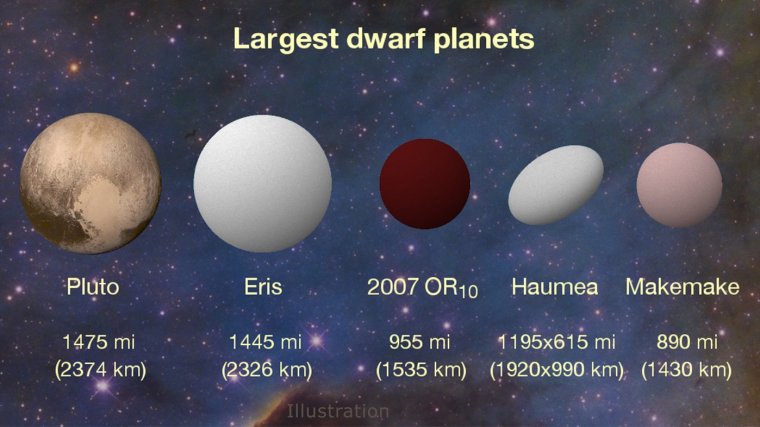| News / Science News |
2007 OR10: Largest Unnamed World in the Solar System
NASA | MAY 14, 2016
Dwarf planets tend to be a mysterious bunch. With the exception of Ceres, which resides in the main asteroid belt between Mars and Jupiter, all members of this class of minor planets in our solar system lurk in the depths beyond Neptune.

New K2 results peg 2007 OR10 as the largest unnamed body in our solar system. ![]()
They are far from Earth - small and cold - which makes them difficult to observe, even with large telescopes.
Pluto is a prime example of this elusiveness. Before NASA's New Horizons spacecraft visited it in 2015, the largest of the dwarf planets had appeared as little more than a fuzzy blob, even to the keen-eyed Hubble Space Telescope. Given the inherent challenges in trying to observe these far-flung worlds, astronomers often need to combine data from a variety of sources in order to tease out basic details about their properties.
Recently, a group of astronomers did just that by combining data from two space observatories to reveal something surprising: a dwarf planet named 2007 OR10 is significantly larger than previously thought.
The results peg 2007 OR10 as the largest unnamed world in our solar system and the third largest of the current roster of about half a dozen dwarf planets. The study also found that the object is quite dark and rotating more slowly than almost any other body orbiting our sun, taking close to 45 hours to complete its daily spin.
For their research, the scientists used NASA's repurposed planet-hunting Kepler space telescope -- its mission now known as K2 -- along with the archival data from the infrared Herschel Space Observatory, a mission of the European Space Agency with NASA participation.
The revised measurement of the planet's diameter, 955 miles (1,535 kilometers), is about 60 miles (100 kilometers) greater than the next largest dwarf planet, Makemake, or about one-third smaller than Pluto. Another dwarf planet, named Haumea, has an oblong shape that is wider on its long axis than 2007 OR10, but its overall volume is smaller.
YOU MAY ALSO LIKE



